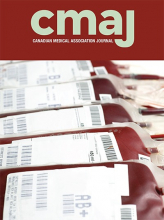γ-Hydroxybutyrate (GHB) induces euphoria and relaxation
Also known as liquid ecstasy or “G,” GHB and its analogues (e.g., γ-butyrolactone) are GHB- and γ-aminobutyric acid-B (GABAB) receptor agonists within the central nervous system.1–3 Synthetic GHB is a tasteless, colourless liquid used for purported anabolic effects,1,2 increasing relaxation and euphoria, enhancing sexual experiences or as an agent in drug-facilitated sexual assaults.1 It is detectable in urine for 5–12 hours after ingestion, but is not included on standard toxicology screens.2,3 Confirmatory testing with gas chromatography–mass spectrometry requires consultation with provincial toxicology laboratories.2
Tolerance can develop within several days of continuous use1,3,4
Doses of GHB range from 500 mg to 5 g, often taken in “capfuls.”2,4 Given a serum half-life of 20–30 minutes,2 people who have developed a tolerance may require doses every 30 minutes to prevent withdrawal symptoms.2,5
Poisoning can develop rapidly
Toxicity is dependent on dose — doses of 20–30 mg/kg may be stimulating, while doses of 40–60 mg/kg can lead to myoclonus, respiratory depression, bradycardia and coma.3 Acute intoxication generally resolves in 6–8 hours with supportive management and airway stabilization.2,5
Withdrawal from GHB may be fatal if unrecognized
Withdrawal can manifest within 1–6 hours following cessation.2–4 Initial symptoms include diaphoresis, tachycardia and anxiety, and may rapidly progress to hallucinations, delirium, seizures or death if not appropriately managed.1,2,4 Withdrawal can persist up to 15 days despite treatment.2,4
Benzodiazepines are first-line therapy for GHB withdrawal
Specific choice of benzodiazepine depends on patient factors, including comorbidities, age and hepatic function. Diazepam doses of up to 300 mg/d have been used.4 Adjuncts targeting the GABAB receptor, such as baclofen, initially dosed at 10 mg 3 times daily, may potentiate the effects of benzodiazepines.1,2 Benzodiazepine resistance has been reported.1,5 Clinicians should consider transitioning to phenobarbital and monitoring in a high-acuity unit if withdrawal symptoms worsen despite escalating benzodiazepine doses.1,4,5
Footnotes
Competing interests: None declared.
This article has been peer reviewed.
Funding: This work was supported by the National Institute on Drug Abuse (R25-DA037756 to Victoria Weaver). Nadia Fairbairn is supported by a Philip Owen Professorship in Addiction Medicine at the University of British Columbia, and a Scholar Award from the Michael Smith Foundation for Health Research– St. Paul’s Hospital Foundation.
This is an Open Access article distributed in accordance with the terms of the Creative Commons Attribution (CC BY-NC-ND 4.0) licence, which permits use, distribution and reproduction in any medium, provided that the original publication is properly cited, the use is noncommercial (i.e., research or educational use), and no modifications or adaptations are made. See: https://creativecommons.org/licenses/by-nc-nd/4.0/











